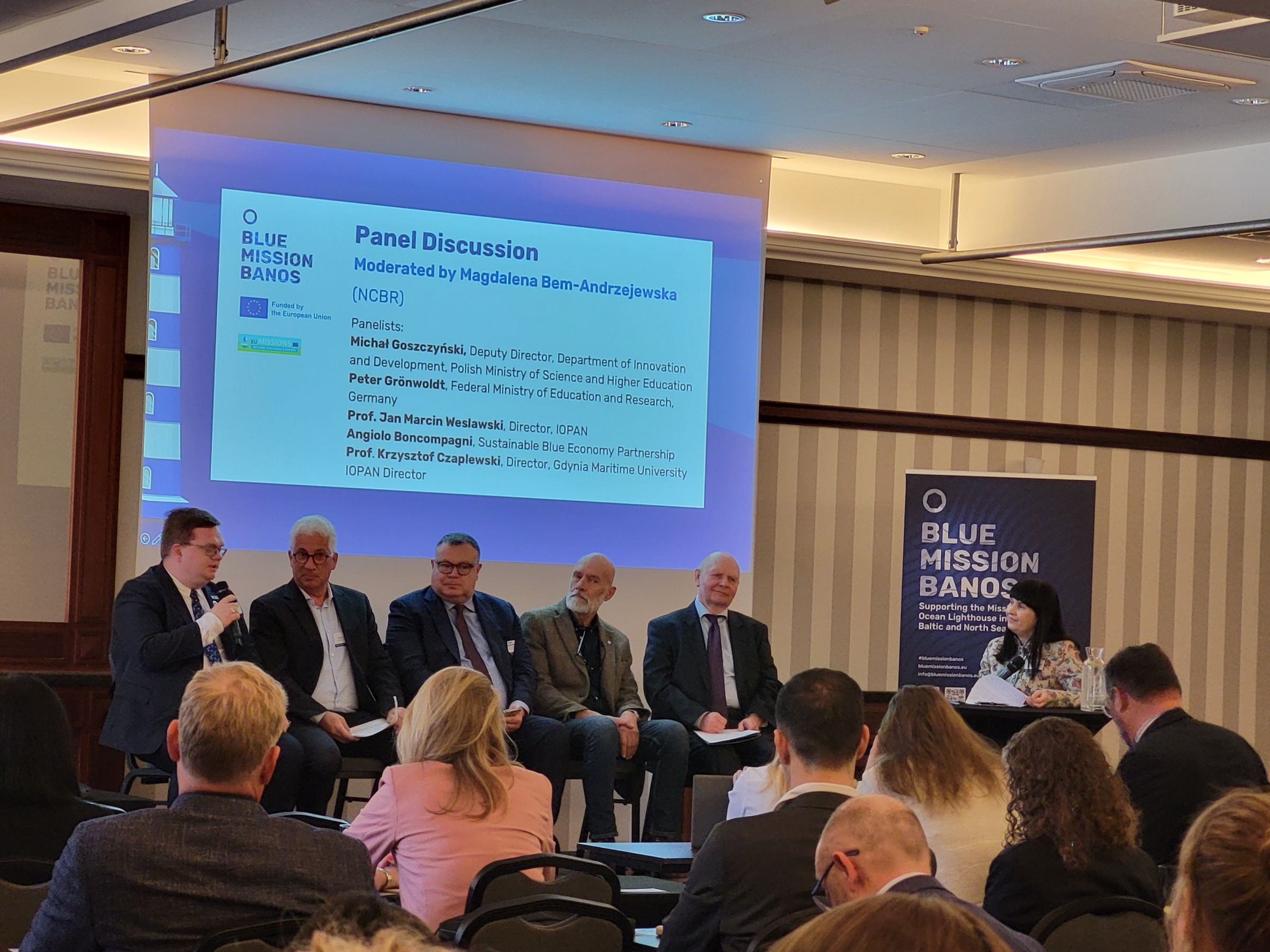Towards good marine environmental status through innovations
The most pressing blue economy issues in the Southern Baltic were addressed by around 200 participants at the fourth Mission Arena event of Blue Mission Banos in Sopot, Poland, at the end of April. The trends in the southern parts of our seas are much the same as in the Finnish seas; offshore wind, nature conservation and marine multiuse are the topics of discussion. The two-day event culminated in the creation of a common roadmap to achieve the objectives of the Mission Arena. MSP FI participated in the event in the framework of the Baltic Sea2Land project and brought greetings from Poland to Finland from the blue economy sector.
Launched under Horizon Europe, the EU Missions are a new way to deliver concrete solutions to the biggest challenges of our time. Of the five missions to be worked on between 2021 and 2027, the key one for marine regions and maritime spatial planning is ‘Restore our oceans and waters’. The main objectives of the mission are:
- Protect and restore marine and freshwater ecosystems and biodiversity
- Prevent and eliminate pollution of our oceans, seas and waters,
- Make the blue economy sustainable and carbon neutral and circular.
A Mission Ocean & Water Charter has been created to which different actors can voluntarily communicate their own actions in support of the objectives set out in the Mission. MSP FI has signed up through the second round of the planning process, where multi-use and the European Green Deal are cross-cutting themes.

Blue Mission Banos opening panel
The missions support regional engagement and cooperation through so-called lighthouse areas. One of these areas is the Baltic and North Sea (Banos). The lighthouse regions will pilot, develop and deploy solutions to implement the mission.
The Sopot Mission Arena event was the fourth and last Banos event. The event discussed the most pressing blue economy issues in the southern Baltic Sea region, such as sustainable food production, multi-use of the sea, maritime transport and ports, and maritime security. The event concluded with the joint creation of a roadmap to steer the region towards the objectives of the EU’s oceans and waters mission.
Regenerative aquaculture as a source for innovation
Two Finnish blue bioeconomy representatives were interviewed on the spot by the MSP FI to find out their views on the implementation of the missions and how MSP can support them in taking the missions forward.
Jonas Harald, Fish-leader advisor from Aktion Österbotten, works as a local project promoter in Ostrobothnia, but is also involved in projects promoting the cultivation of low-trophic species and regenerative farming in marine areas.
Joel Lindholm, on the other hand, represents the entrepreneur’s perspective and is the founder of Under Ytan, an Åland-based company focusing on regenerative aquaculture and blue biotechnology.
Both actors are piloting new methods to improve the marine environment through regenerative aquaculture. Both are also looking at the use of new aquaculture species in the food industry and other production.

Joel Lindholm and Jonas Harald took part in the Mission Arena in Poland to network and hear about the latest developments in the blue bioeconomy.
Both Harald and Lindholm highlighted similar challenges. In the aquaculture sector, the lack of clear guidelines, strategies and above all legislation pose challenges. Both actors call for better identification and promotion of regenerative aquaculture, precisely at different levels of governance.
”The national aquaculture programme should include a reference to species other than fish,” says Jonas, referring in particular to seaweed and mussels. ”These should also be recognised as regenerative farming methods and as a possible offset to, for example, conventional aquaculture and its nutrient inputs.”
”We need more cooperation between public and private actors and research. In addition, more specific funding is needed to develop and pilot new methods with a positive impact on the state of the marine environment as part of climate change mitigation.” Joel argues.
Both have clear messages and aspirations for maritime spatial planning:
”Enabling multi-use should be at the heart of planning, especially for offshore wind and other human activities and infrastructure at sea,” says Jonas. ”It is also important that the maritime spatial plans are used by decision-makers, and that they include areas for low-trophic aquaculture, restoration and conservation,” Joel continues.
The update of the Maritime Spatial Plan was officially launched in spring 2024, and multi-use and the European Green Deal are cross-cutting themes in the process. By taking these themes into account, among others, the updated Marine Spatial Plan aims to respond to the wishes of the sector.
The Coordination of the Finnish MSP cooperation participated in the fourth Blue Mission Banos Arena as part of the Baltic Sea2Land project meeting. The project, which will end at the end of 2025, is also one of the activities in the Mission Banos area. The updated Finland’s Coastal Strategy of the Ministry of Environment, which will be implemented through the Baltic Sea2Land project, is also part of the measures taken by the region to achieve the Mission.
For more information on the Mission and its implementers, please visit Mission Ocean and Waters – European Commission





